To hold the man the ice must be at least four inches thick. If the ice is strong enough and doesn’t going to break right away, four inches is enough to hold the average 80 kilos man standing on his two feet.
The small sedan or hatchback car like Toyota Corolla weights about 3000 lbs. (usually less than 1500 kilos)—just like eighteen average men, but it stands on the ice on its four wheels generating less pressure on the surface of ice. To hold a compact sedan the ice must be from eight to twelve inches thick.
However, most of the time the ice on the lake or river is covered with a snow. There are not much compact sedans over there you can drive in the deep snow, so you will need a bigger car. Bigger means heavier, like a truck or SUV. These do weigh more than two thousand kilos (up to three thousand sometimes). The ice must be 12—16 inches thick to hold such vehicles.
Pretty simple, huh? Local newspapers or radio stations are always publicize the ice thickness data for every significant lakes or rivers in the area—so you can be sure if it safe to park on the ice. Otherwise, you will end up like these guys.
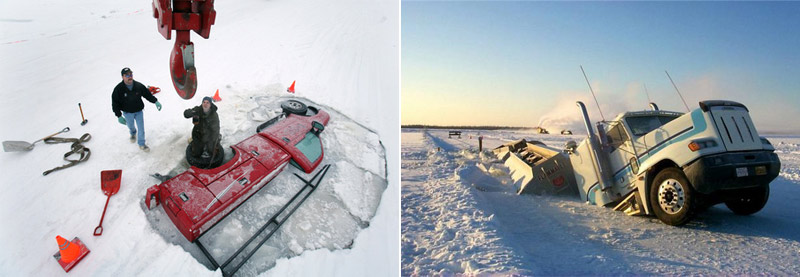
Oh, Alaska! Such accidents are pretty common here. The cars are falling through the ice every single winter in dozens.
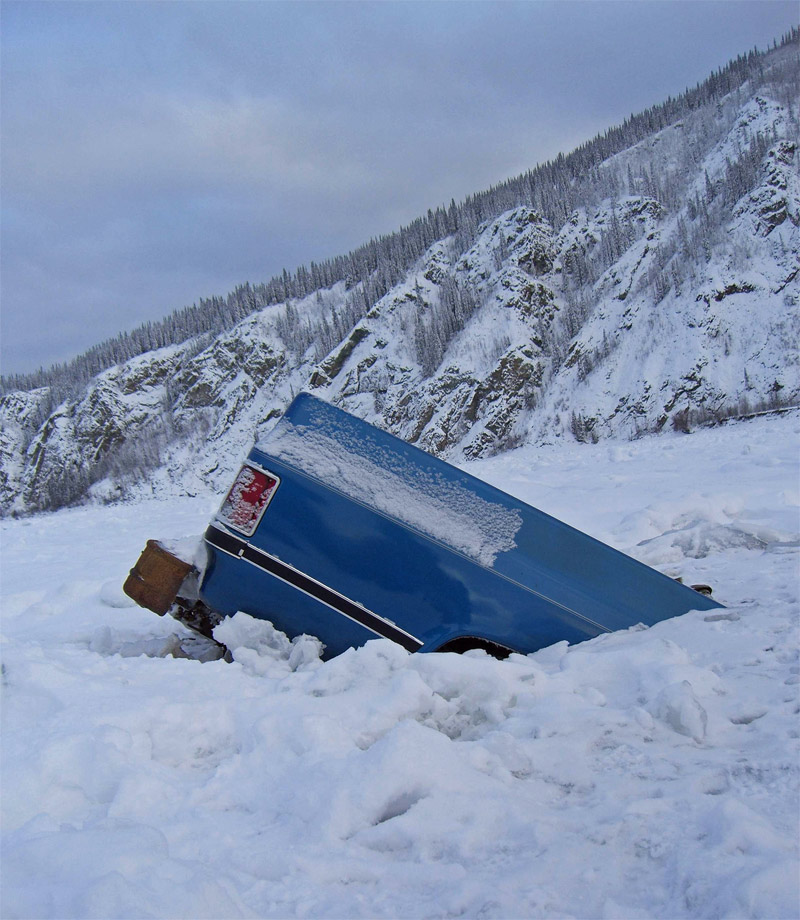

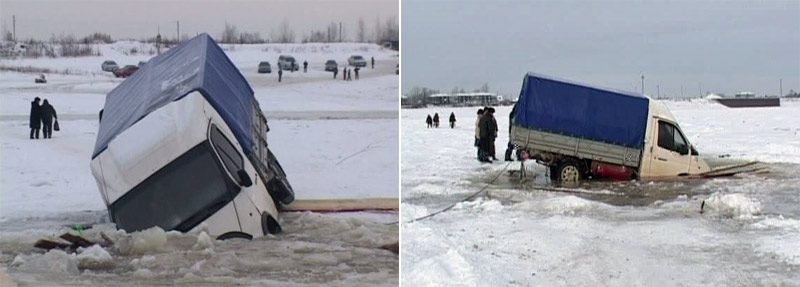
Truck fell into the icehole on the frozen river in Siberia. Fortunately, nobody was hurt.
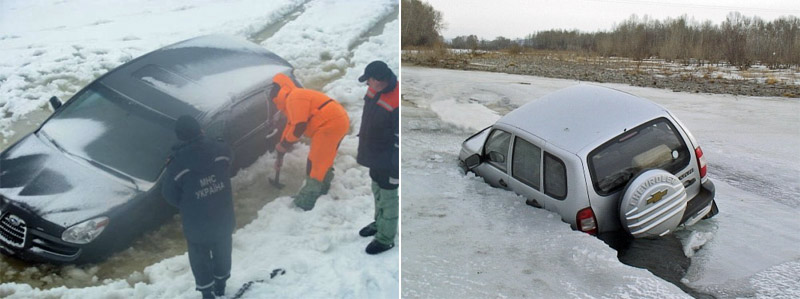

Ice is a serious business. Don’t drive on ice.
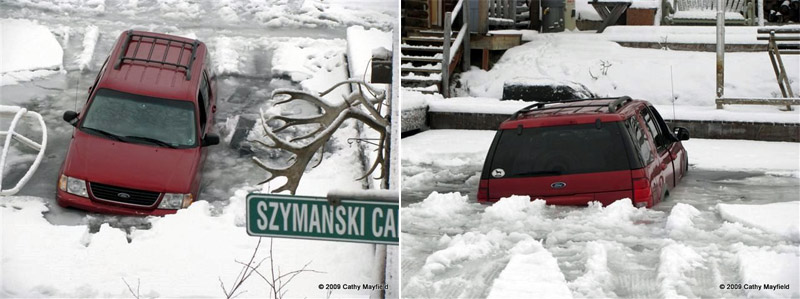
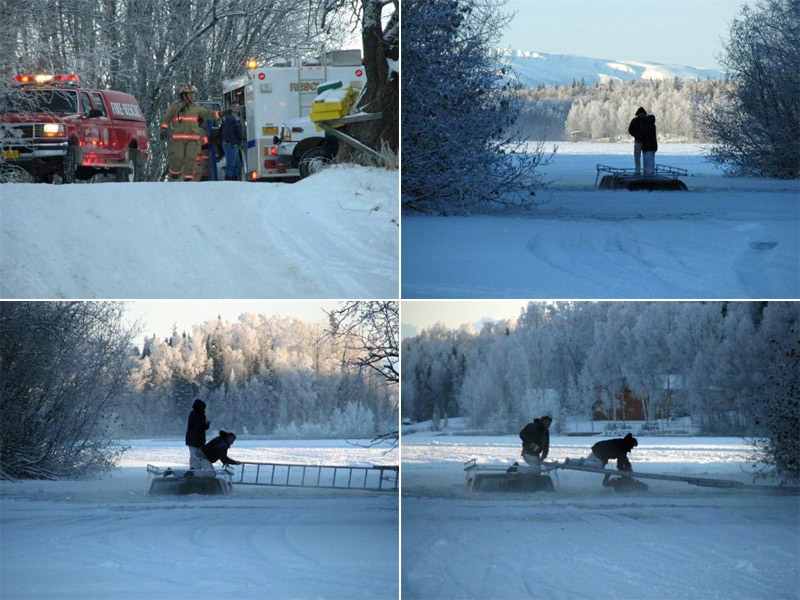
It’s good when the help is near and you won’t freeze to death on the roof of your own truck that was felt through the ice on the lake. These couple was forced to move to the truck’s roof by the rising water when their truck fell through the ice on the Flat lake in Alaska. It was -5F (-20C) outside. They were really lucky the local fire brigade have managed to rescue them in no time.
